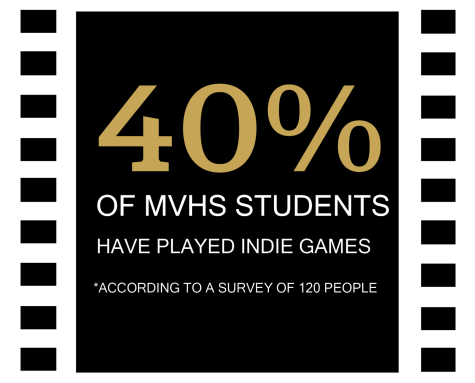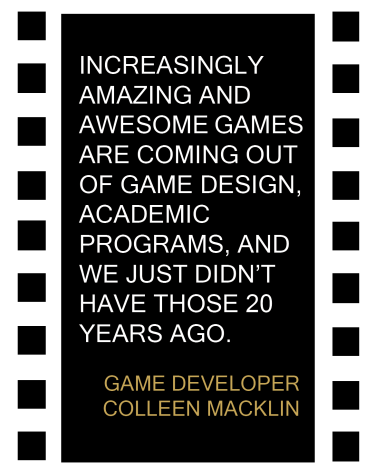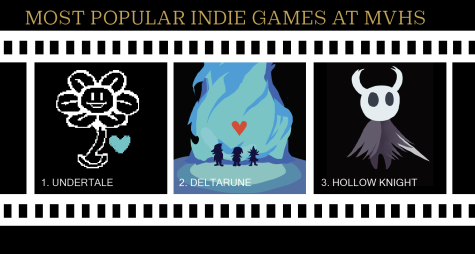Game on!
Investigating the increase in popularity of indie games and accessibility to game development
SteamXO Licensed under CC by 2.0
Stardew Valley, a video game designed by game developer Eric Barone, is one example of an indie game that has become extremely widespread.
February 14, 2023
As new software increases public accessibility towards game development, independently created video games, or indie games, have become more widespread. Sophomore Aaron Chan first found an interest in game development while learning JavaScript through Khan Academy in second grade. After seeing people post their own game projects on the website, Chan was inspired to create his own.
“I was like, ‘Wow, I don’t just have to play video games, I can also make them and just make it however I want,’” Chan said. “And then maybe around fifth grade, maybe sixth grade, I discovered a website called Wick Editor, which is what I’m still using now, a website [where] you can make games and animations.”

Chan is currently using Wick Editor to create his own version of Tetris, and he is just one of many who have entered the world of game development through public software. Game developer and Professor at Parsons School of Design Colleen Macklin is supportive of the increased accessibility to software, stating “the more experiences and voices we can experience in games, the better.” However, Macklin also notes that the large increase in the number of indie games in the market has had some drawbacks.
“The problem that we’re facing now, part of what people mean when they say ‘The indie-pocalypse’ is that the problem is findability,” Macklin said. “How do you find that game that you’re really going to love in a sea of all these games coming out every single day? Every single day, there’s dozens of games coming out on a variety of platforms. I think that is something that needs to be solved.”
Despite this, indie games have still dramatically risen in popularity over time. According to a study by YouGov, in 2022, 31 percent more PC and console gamers played indie games compared to 2021. The indie genre is also one of the only game genres to see growth from year to year, with other genres such as first person shooters, strategy and puzzle games and simulation games all dropping in number of players. Macklin attributes the recent indie game success to increases in education geared towards game development, with classes in game design being offered in college and even high school, resulting in exciting new innovations often published by groups of students.

“Increasingly amazing and awesome games are coming out of game design, academic programs, and we just didn’t have those 20 years ago, they’re relatively new,” Macklin said. “People who are really studying [games are] taking chances and taking risks because they’re in school, so they don’t have to start up right off the bat and make a ton of money off their games. They can explore new ideas, and I think that’s a big part of it that not many people talk about.”
Chan also adds that large video game companies are less likely to interact with their players as much compared to indie game developers. He explains that while triple A games — games made by larger companies — are more focused on making money, indie games focus more on the player experience.
“[Indie developers usually] just made a game because they wanted to and then it maybe just popped off and then they just want to make the game better,” Chan said. “Pay-to-win is becoming more frequent [in triple A games] or at least paying for cosmetics is becoming more common, so people might drift over to indie games.”
While junior Moulik Lohmor agrees that indie games are more community focused, he still prefers triple A games due to certain limits that indie games face.
“Game wise, [indie games are] not as expansive, the maps are very limited and set,” Lohmor said. “Like for Hades, the map is very limited, it is only a small square you play in every time, while a 3D game like Legend of Zelda, it’s very open world.”
However, Lohmor expects that indie games can continue to become much better and hopes for improved games in the future.
“[Indie games] should definitely continue [and] definitely expand the market [because] it’s very fun to play,” Lohmor said. “But I feel like they should probably get some new and more inspirational ideas other than the classic games like Celeste and Cuphead and others.”
Macklin finds that indie games are starting to contain new ideas and have evolved to contain much more variety.
“[In the past] you just kind of saw a lot of the same stuff and a lot of patterns, but now people are making so many different types of game based experiences, it’s just wild,” Macklin said. “Everything from full motion video … and I still love stuff coming out that’s text based only, you know, interactive narrative. And then we’ve got these really wild and wacky [3D experiences] from Super Hot to [a game] which is about airports that are run by dogs. They’re just a lot of exciting and very different forms that indie games take today. I would say [indie games have] diversified both in who makes the games and the kinds of games that we have access to. They’re just so many more experiences now.”




















